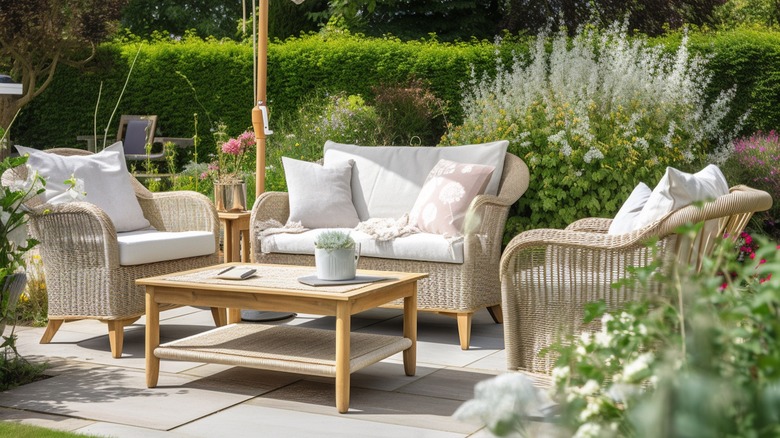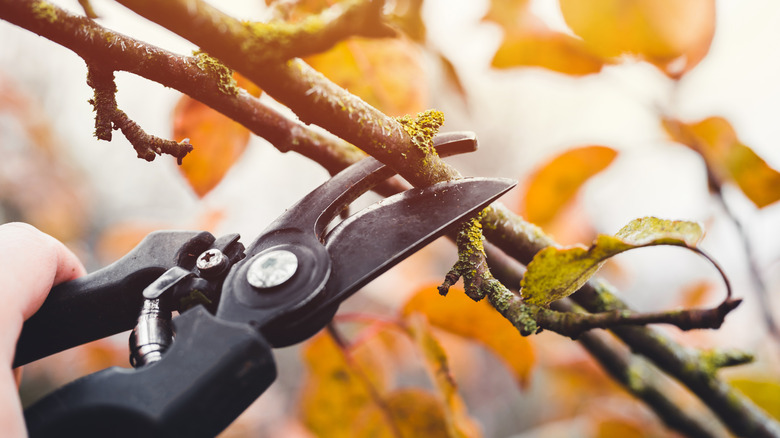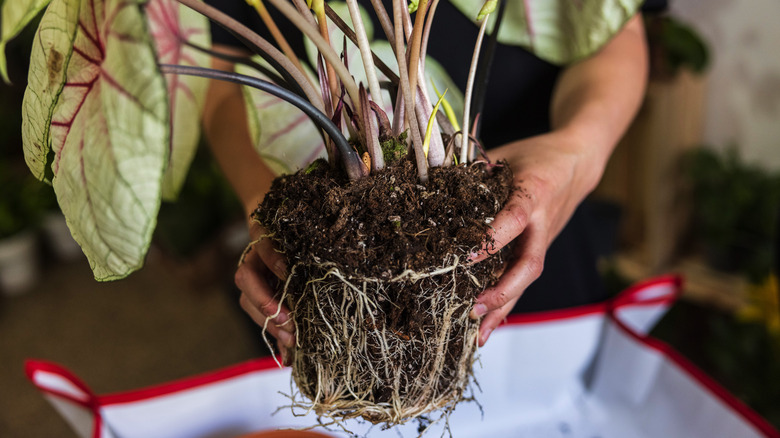What To Do Around Your Yard And Garden Before Evacuating For Extreme Weather
Evacuation orders are common in preparation for hurricanes and other potentially destructive events. Deciding what to pack is usually the thing people prioritize, but considering what to do around your yard and garden can be equally important. Although some people may not find these outdoor areas essential when planning for extreme weather, others do, and for good reason. If time allows, you can trim your trees and shrubs, secure loose items, and/or strategically cut any plants you plan to take with you.
Regardless of the type of natural disaster, there's no way to predict exactly how much damage will occur to your property. Taking extra precautions to prepare your yard and garden can reduce some of the damage, not only to your home but to your neighbors' homes. Plus, making arrangements to take plants with you can save their lives, which may be especially paramount for anyone who has a plant with sentimental or other value.
Why you should trim your trees and secure your outdoor items
We've all seen what storms and floods are capable of, either in person or in photos and videos. Sometimes, destruction involves an uprooted tree that ends up on a car or house. Other times, only the branches and limbs are scattered about, but did you know that trimming your trees can actually reduce storm-related damage like this? The trimming process is intended to create an open canopy that wind can easily pass through while strengthening the tree. This lowers the chances of it falling over and its branches breaking off and blowing away.
Another common storm aftermath involves the "rearrangement" of outdoor furniture. Patio tables and chairs, which are typically lightweight, could end up several hundred feet from your yard. Trampolines, although typically heavier than patio furniture, can become like sails when in contact with high winds and travel just as far. To prevent this, secure all your outdoor items or put them in your garage or shed before evacuating after packing all your essential belongings. If you have a trampoline, you can either flip it upside down or anchor it.
How to protect your plants
Plants can also be casualties of extreme weather, and for many people, they're worthy of protection. TikToker @PlantTok's Houseplant Girl shared a tip for how to prepare and transport a small or medium plant that may end up getting killed or destroyed during a storm. She recommends (if time allows) propagating the plant by cutting under the nodes, which is where roots typically will grow. Then, she recommends placing the plant in a small pot with dirt and wrapping it with paper, plastic, and rubber bands.
If the threat isn't severe enough to warrant an evacuation, or if you can't or don't want to take them with you, there are other options to protect your plants. You can cover them with buckets and place heavy items on top. On the other hand, if there is a risk of flooding only, you can move the plants indoors and place them on a table until you return.
Regardless of what steps you take to protect or secure your plants and outdoor items, always make sure to first prioritize your own safety and that of your family in preparation for an evacuation. Also, make sure you have all of your essential belongings. Then, if time allows and only if time allows, you can worry about your yard and garden.


